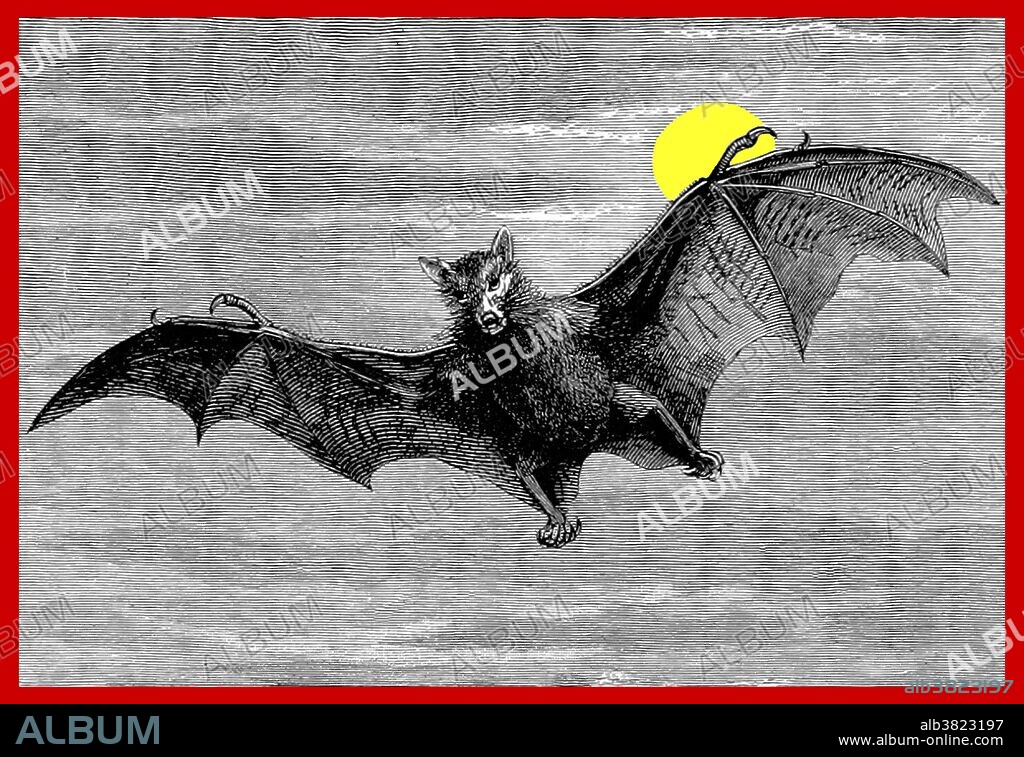alb3823197
Flying Bat, 1877

|
Zu einem anderen Lightbox hinzufügen |
|
Zu einem anderen Lightbox hinzufügen |



Haben Sie bereits ein Konto? Anmelden
Sie haben kein Konto? Registrieren
Dieses Bild kaufen.
Nutzung auswählen:

Titel:
Flying Bat, 1877
Untertitel:
Siehe automatische Übersetzung
Bats are mammals of the order Chiroptera whose forelimbs form webbed wings, making them the only mammals naturally capable of true and sustained flight. By contrast, other mammals said to fly, such as flying squirrels, gliding possums, and colugos, can only glide for short distances. Bats do not flap their entire forelimbs, as birds do, but instead flap their spread-out digits, which are very long and covered with a thin membrane or patagium. Bats are the second largest order of mammals (after the rodents), representing about 20% of all classified mammal species worldwide, with about 1,240 bat species. Bats are present throughout most of the world, with the exception of extremely cold regions. They pollinate flowers and disperse fruit seeds; many tropical plant species depend entirely on bats for the distribution of their seeds. Bats are economically important, as they consume insect pests, reducing the need for pesticides. Image taken from page 42 of "Woodland Romances; or, Fables and Fancies" by Clara L. Mateaux, 1877.
Bildnachweis:
Album / Science Source / British Library
Freigaben (Releases):
Model: Nein - Eigentum: Nein
Rechtefragen?
Rechtefragen?
Bildgröße:
4500 x 3094 px | 39.8 MB
Druckgröße:
38.1 x 26.2 cm | 15.0 x 10.3 in (300 dpi)
Schlüsselwörter:
 Pinterest
Pinterest Twitter
Twitter Facebook
Facebook Link kopieren
Link kopieren Email
Email
